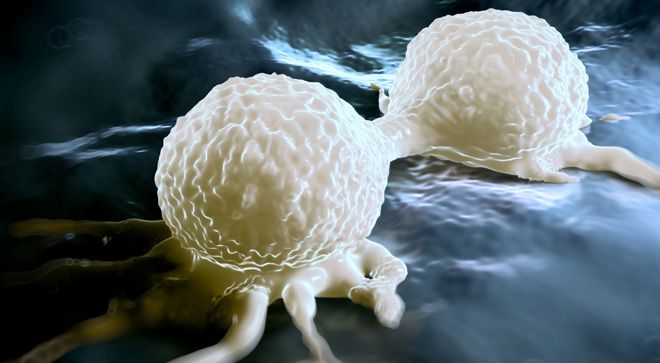Video
Chronic Lymphocytic Leukemia: Risks and Complications
Transcript:
Harry P. Erba, M.D., Ph.D.: When I see patients in clinic one of the most common questions I get is, “Why me? Why did I get it?” Are there any risk factors that are associated with developing CLL [chronic lymphocytic leukemia]?
Ian W. Flinn, M.D., Ph.D.: I get that question too. “Why did I get it? Why didn’t my neighbor get it?” It’s amazing how little we know about this. We do know that CLL is much more prevalent in Western countries than it is in say Asian countries. It’s a rare disorder in Japan. Lymphomas in general tend to occur in a belt in the United States, where they’re more common. For instance, it tends to be around agricultural areas that this is more common. It’s more common in white males than it is in other groups. But exactly why that occurs, we don’t know. It does look like people who immigrate to this country ultimately are low risk. If they are from Asia and they immigrate to the United States, within a few generations their risk becomes pretty similar to the rest of the population. So that led people to think that there has to be some environmental exposure.
And finally, there is a rare form of CLL that is a familial form. And so we know that family members of patients with CLL are at increased risk of getting CLL. That said, you can still take comfort in that the absolute risk of family members getting CLL is small compared to, unfortunately, all the other things that we face.
Harry P. Erba, M.D., Ph.D.: That’s a really important point. Often, we talk to our patients about some of the genetic changes that we can now identify in the leukemia cells that help with risk stratification. And the first question I get is, “Are those genetic changes things that I can pass on?” And it’s really important to explain that, no, those genetic changes are in the cancer itself.
Ian W. Flinn, M.D., Ph.D.: Exactly. It’s not what we call a germline mutation. It’s not an inherited thing. For instance, you often hear about how in breast cancer, there are these genes that can be passed on to family members. That’s not what we’re seeing here, and we can’t identify the gene that’s causing CLL. And it looks like there’s not one. When we do molecular profiling of CLL cells, there are many different changes that occur. It’s not just one problem. In lymphomas, there are often these genetic changes that occur where two chromosomes within the lymphoma cells—again, not within the rest of the patient—break off and often change partners and drive it. We just don’t have that in CLL.
Harry P. Erba, M.D., Ph.D.: So these cells accumulate. What are the complications that arise from that for our patients?
Ian W. Flinn, M.D., Ph.D.: You can think of different groups of issues that can occur. I think one of the issues is that as the cells proliferate and grow, you can have problems where they crowd out and cause marrow dysfunction. They don’t allow normal cells—red cells, platelets, other white blood cells—to grow in the bone marrow. And that means someone can become anemic. Their hemoglobin drops, their energy is going to go down, they’re going to be tired. Their ability to exercise will go down. They can have problems with platelets. Platelets are the cells in our blood that help us clot blood. And so, there can be a bleeding risk if those drop down.
I think one of the harder to quantify but real issues is problems with their immune system. We often talk about what the good white blood cells are, the neutrophils that help us fight off bacterial infections. But even when patients have normal neutrophil numbers, because of these interactions between the different parts of our immune system, even in patients who aren’t actively being treated, there are some defects in the immune system that occur. And unfortunately, this tends to accumulate over time. Patients who are early on in the course of the disease, they may have pretty close to a normal immune system. But as time goes on, whether it’s with or without therapy, there can be other defects that occur and make people more susceptible to infection. Infection is one of the biggest issues that patients with CLL face.
Harry P. Erba, M.D., Ph.D.: This defect in the immune system not only may lead to infection but some have hypothesized that this might be why CLL patents may have a higher risk of other cancers too.
Ian W. Flinn, M.D., Ph.D.: Yes, that’s a great point too. There does seem to be a family of secondary disease: most commonly skin cancers, honestly, but there are other malignancies that occur as well. This defect in the immune system may allow other malignancies to grow. We know that no cancer should exist in our body. Our immune system should be able to surveil and take care of that and get rid of and eliminate other cancers. But when your immune system doesn’t work correctly, then it’s an opportunity for cancers to grow, and there is an increased incidence of secondary malignancies in patients who have CLL.
Transcript Edited for Clarity




